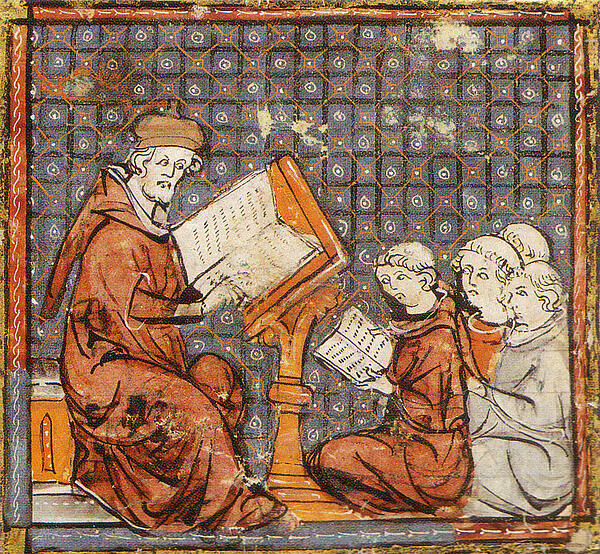Medieval Education
Only the wealthiest people were able to receive an education in Medieval England as it required significant payment.
When William the Conqueror took control of England following the Battle of Hastings in 1066, he became king of a relatively uneducated country. Those who had the highest level of education would often working within the church, but those based in monasteries had taken an isolation vow, which meant their work was also isolated.
As medieval England began to develop, this system needed to change. The merchant trade in particular was a particularly important sector in this period, and required a population that was better educated. This increasing demand for education drove some trading towns to start their own grammar schools, which were often funded by wealthy local merchants.
Latin grammar was heavily featured in lessons as it was the language spoken by many merchants who traded across Europe. Dutch and Spanish merchants, for example, did not understand English, but they could converse in Latin. As such, many traders sent their sons to grammar schools to ensure they could continue the business in years to come.

Every lesson taught at a grammar school was taught in Latin and the teaching centered around ensuring the boys were able to recite new information from memory, regardless of whether or not they had understood that information.
Sadly, books were incredibly expensive in medieval England so this was not an option. By the year 1500, there were grammar schools in most of England’s larger towns, with one of the oldest located in Maidstone, Kent.
Each schools was incredibly small, with many only provided a single room for all of boys attending and their teacher. This teacher would come from a religious background and would focus on teaching the older boys, who would then be tasked with teaching the younger.
Days varied in length depending on the seasons, with lessons beginning at sunrise and ending at sunset. There was also a culture of discipline in the classrooms and mistakes could be punished with a birch to ensure they were not made again.
If boys succeeded in grammar school they could then be sent to university. Oxford and Cambridge Universities were both founded during medieval times and were renowned for their teaching, so they were common choices for those who could afford further education.
Sadly for peasants, the ability of their sons to gain an education was down to the lord of the manor, who would have to grant permission. In cases where peasants were not given permission, they would face a large fine. Historians have suggested this could have been a way of ensuring peasants remained in their place and were no threat to the Feudal System.
There were very few girls at normal school, with wealthy families either home schooling their daughters or schooling them at another nobleman’s home, at home or abroad. Regardless of their place of learning, daughters of the nobility were all taught the same - how to run a household, how to ensure their husband was looked after and, if they were lucky, how to play an instrument and sing.
See also: Medieval Studies
MLA Citation/Reference
"Medieval Education". HistoryLearning.com. 2026. Web.
